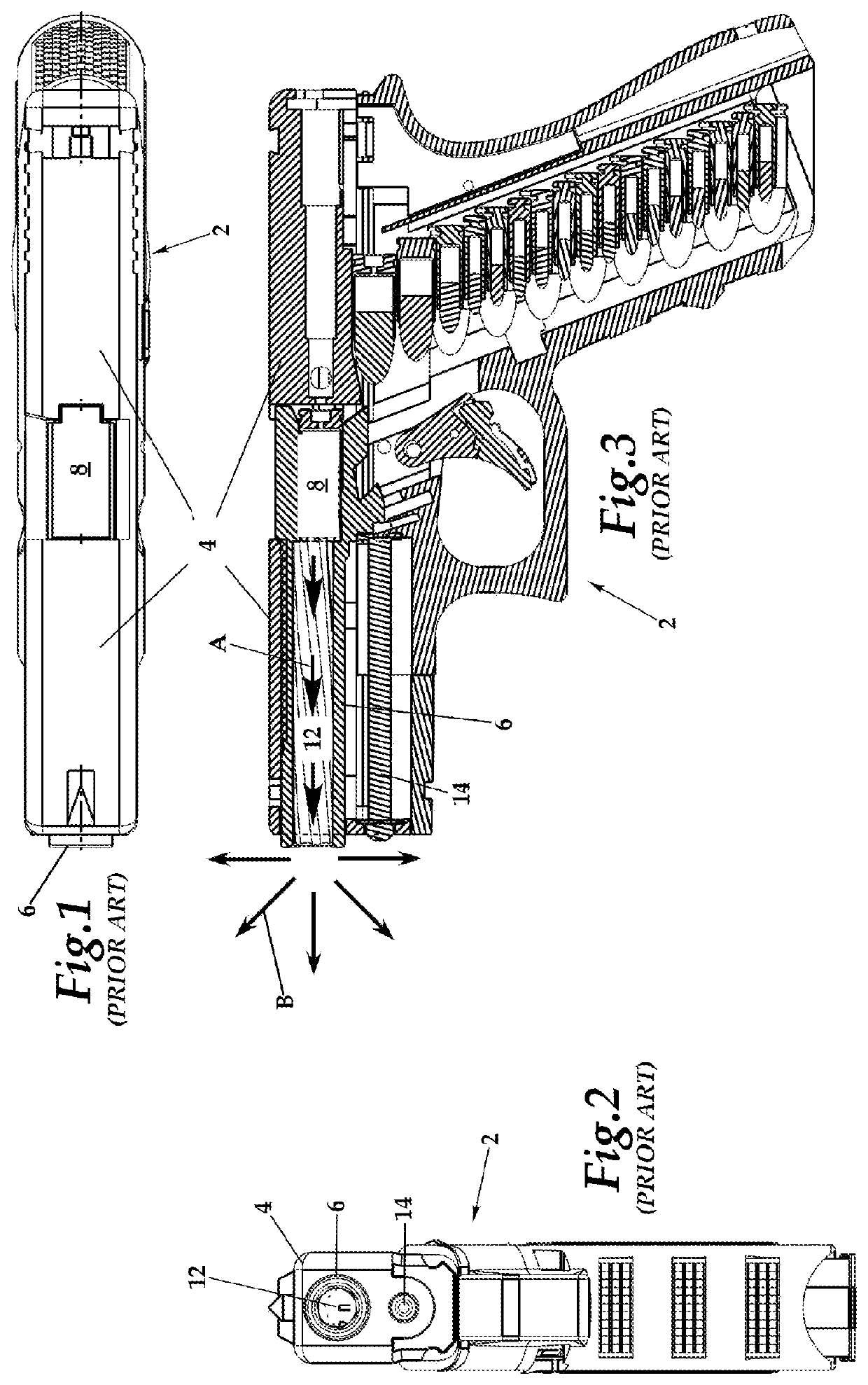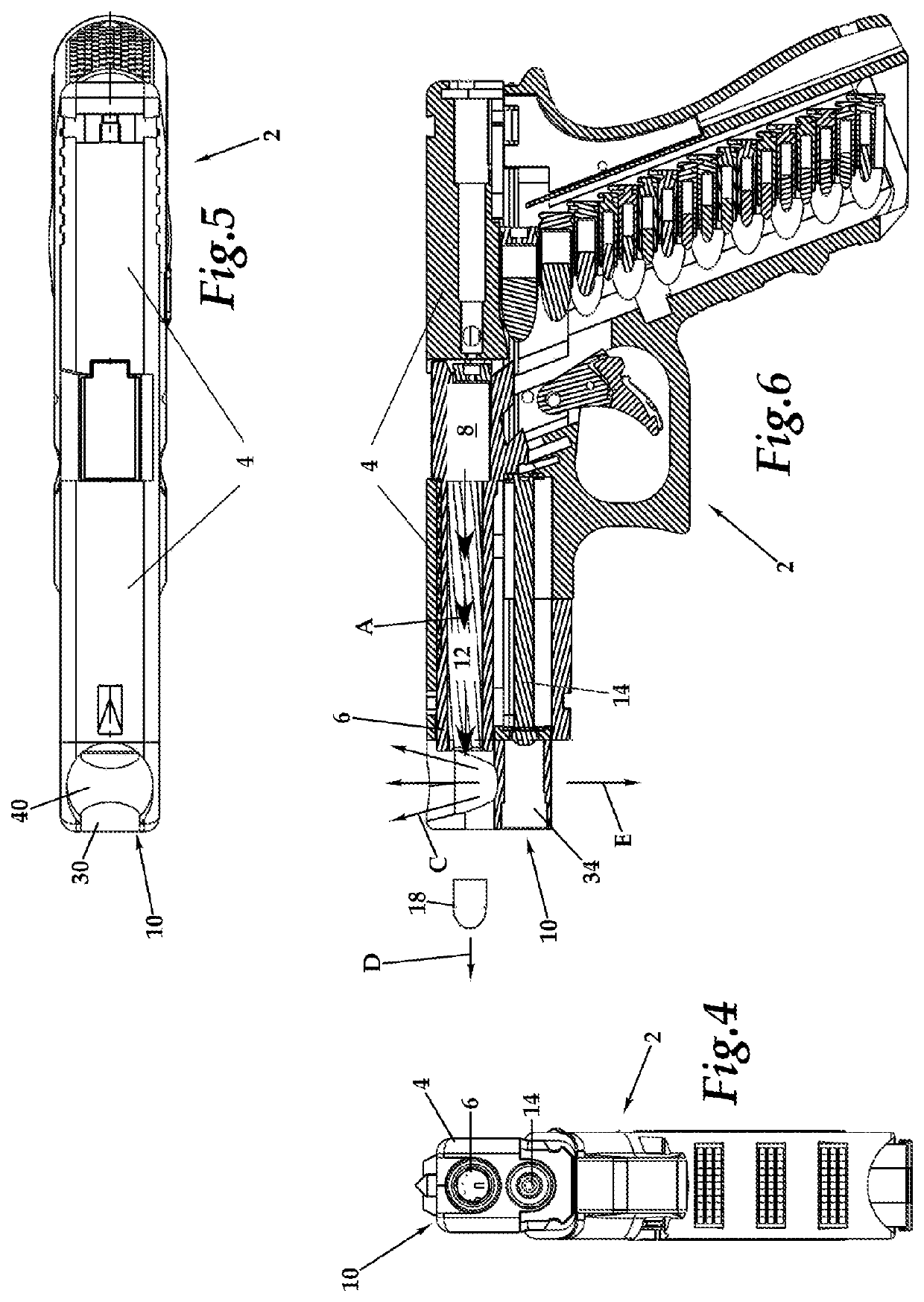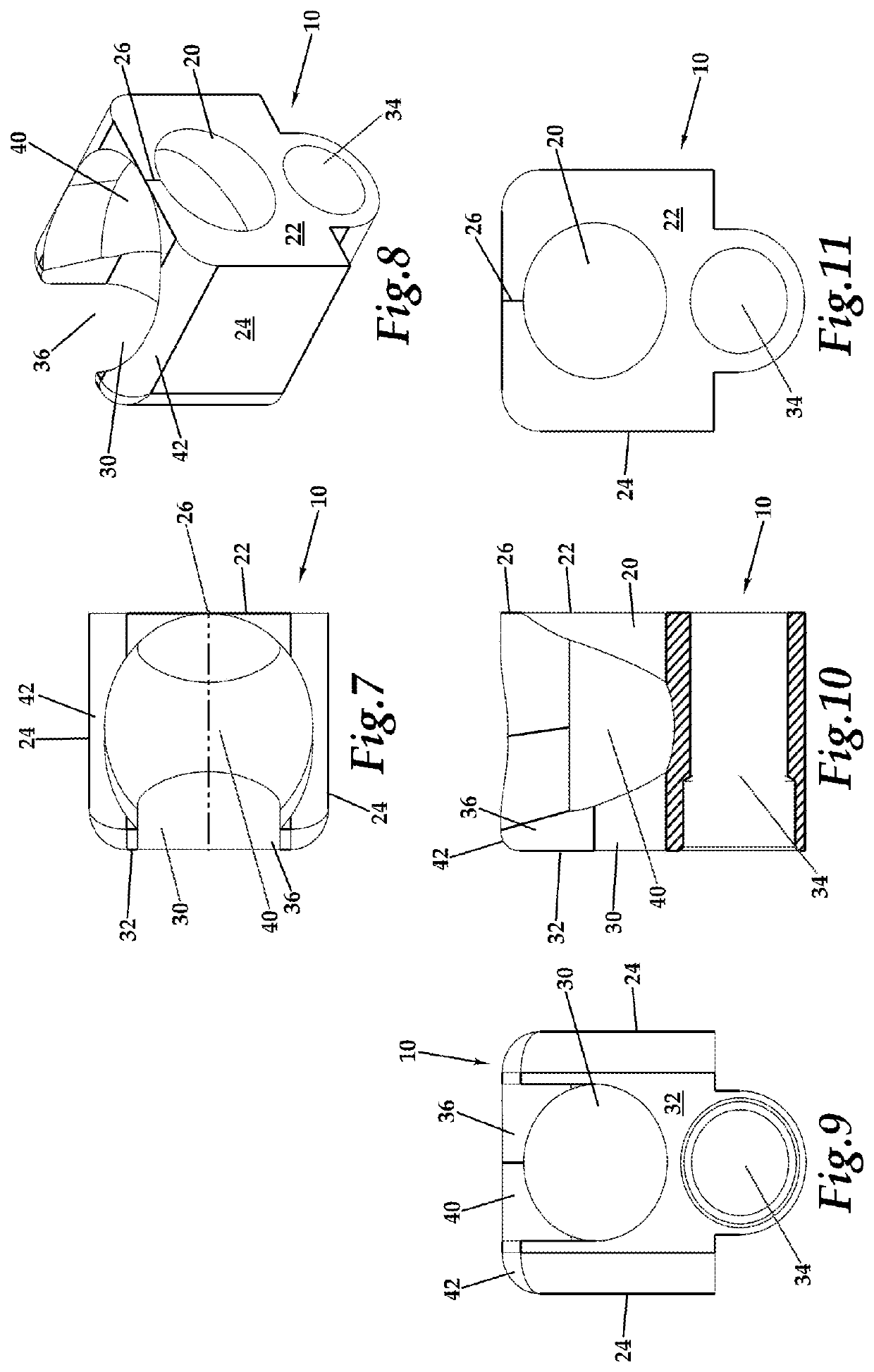Muzzle brake with propelling nozzle for recoil control
a technology of recoil control and muzzle brake, which is applied in the direction of muzzle attachment, weapons, weapons types, etc., can solve the problems of high undesirable recoil, difference between winning or losing in professional shooting competitions, and any innocent being protected and possible innocent bystanders, so as to avoid recoil and minimize recoil , the effect of more accurate delivery of the projectile to a particular intended targ
- Summary
- Abstract
- Description
- Claims
- Application Information
AI Technical Summary
Benefits of technology
Problems solved by technology
Method used
Image
Examples
Embodiment Construction
[0130]Referring to the drawings, wherein like reference numerals represent like parts throughout the various drawing figures, reference numeral 10 is directed to a muzzle brake (FIGS. 4-11) which can be built into a handgun or other firearm (such as a pistol 2), or attached to a muzzle end of a barrel 6 of the pistol 2 (or other firearm). The muzzle brake 10 focuses expanding projectile motion gases through a propelling nozzle 40 to at least partially counteract recoil of the firearm.
[0131]In essence, and with particular reference to FIGS. 4-11, basic details of this invention are described, according to a first and generally preferred embodiment. In this embodiment, the muzzle brake 10 is shown attached to a pistol 2 (FIGS. 1-3) of a generally semi-automatic variety having a slide 4 and barrel 6 extending forwardly relative to a chamber 8. A bore 12 of the pistol 2 is typically rifled to cause a bullet 16 discharged through the bore 12 to travel along a straighter trajectory (along...
PUM
 Login to View More
Login to View More Abstract
Description
Claims
Application Information
 Login to View More
Login to View More - R&D
- Intellectual Property
- Life Sciences
- Materials
- Tech Scout
- Unparalleled Data Quality
- Higher Quality Content
- 60% Fewer Hallucinations
Browse by: Latest US Patents, China's latest patents, Technical Efficacy Thesaurus, Application Domain, Technology Topic, Popular Technical Reports.
© 2025 PatSnap. All rights reserved.Legal|Privacy policy|Modern Slavery Act Transparency Statement|Sitemap|About US| Contact US: help@patsnap.com



